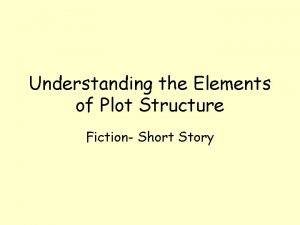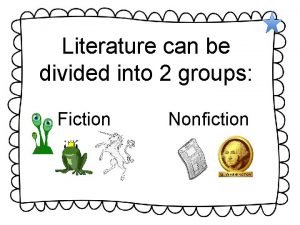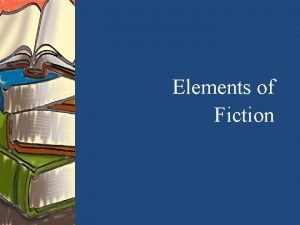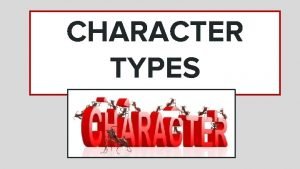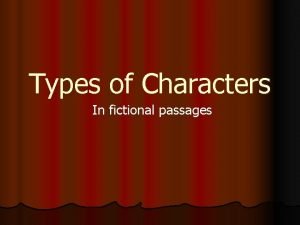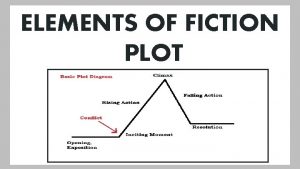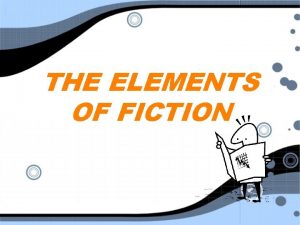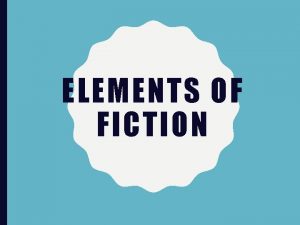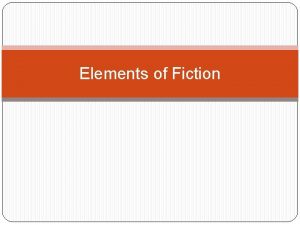Elements of Fiction The Key Elements Plot Characters









- Slides: 9

Elements of Fiction

The Key Elements: • • Plot Characters Setting Point of View Style Tone Language Theme

Plot • The plot of a story is more than “what happens. ” It is how “what happens” is revealed. – For example, events are usually revealed in chronological order. However, an author may choose to tell his or her story out of sequence. • Also, it is important to ask if the events are shaped by historical, social, and personal connections. • Things that may enhance the plot include unexpected events, conflict, suspense, flashbacks, and foreshadowing. So always be on the look-out for those elements. • Every good story has a conflict. The conflict is the struggle between opposing forces that emerges as the action develops. • Other important terms to know (and use as you write): – Flashback: examines an event that occurred before the story’s main action – Foreshadowing: a hint at things to come

Tracing the Plot • There are several different elements of plot within a work. Typically, all plots follow the same basic pattern: – First you have exposition. Exposition is the basic information needed to understand the events that follow. For example, you might be given background information about your characters. – Second, you have the rising action. During this point in the story, conflicts begin to arise. If you lost interest in the story during the exposition (sometimes it can be tedious—but important—to read), the author will gain your attention here. – Third, you have the climax of the story. This is the point of greatest tension in the story. If the author has done his or her job well, you should be on the edge of your seat, anxiously turning the pages to see what happens next. – Fourth, you will have a brief section of falling action. This section is short to non-existent because the author must keep the audience’s attention now that the climax has occurred. – Finally, you have the resolution. The resolution draws the action to a close and often accounts for all remaining loose ends.

2. Characters • Protagonist – the central character • Antagonist – anything that causes conflict for the protagonist

3. Setting • The setting of the story establishes its historical, geographical, and physical context. – Historical Setting : particular historical period. The historical context establishes a story’s social, cultural, economic, and political environment. – Geographical Setting : “where” a story takes place. This could be the country or region. This element is important because it may influence the characters’ belief system. – Physical Setting : the actual location where the story takes place. When considered the physical setting, also consider the time of day, the season, the weather, indoors, outdoors, or anything that might inhibit or influence the characters’ actions. • The setting influences our reactions to the story’s events and characters.

Point of View • The point of view is the vantage point from which the events are expressed. • When thinking about the point of view of the story, identify the narrator (the person telling the story). • When a story is told from first person point of view (“I”), you need to question what the narrator is telling you. First person narrators are considered the most unreliable because they often misrepresent and misdirect the readers to fulfill an ulterior motive. Do not be afraid to question what the narrator is telling you and why he/she is telling you something. • The most reliable type of narrator is the objective 3 rd person narrator. This narrator is simply an observer of the action and has no ulterior motive for relaying the information.

4. Style, Language, and Tone • Style : the way in which a writer uses language, word choice, syntax, and sentence length and structure • Language : – Formal Diction : elaborate, complex sentences, learned vocabulary, serious, and objective – Informal Diction : everyday speech, slang, contractions – Imagery : words or phrases that describe what is see, heard, smelled, tasted, or touched – Personification : giving human characteristics to an inanimate object • Tone : attitude of the narrator or author toward the subject matter, characters, or audience

Theme • The theme of a work is the dominant or central idea of the work. • A few common themes in literature: – Nostalgia for a vanished past, the disillusionment of adulthood, the pain of love, the struggle of women for equality, the clash between civilization and the wilderness, the inevitability of fate, the impact of the past on the present

